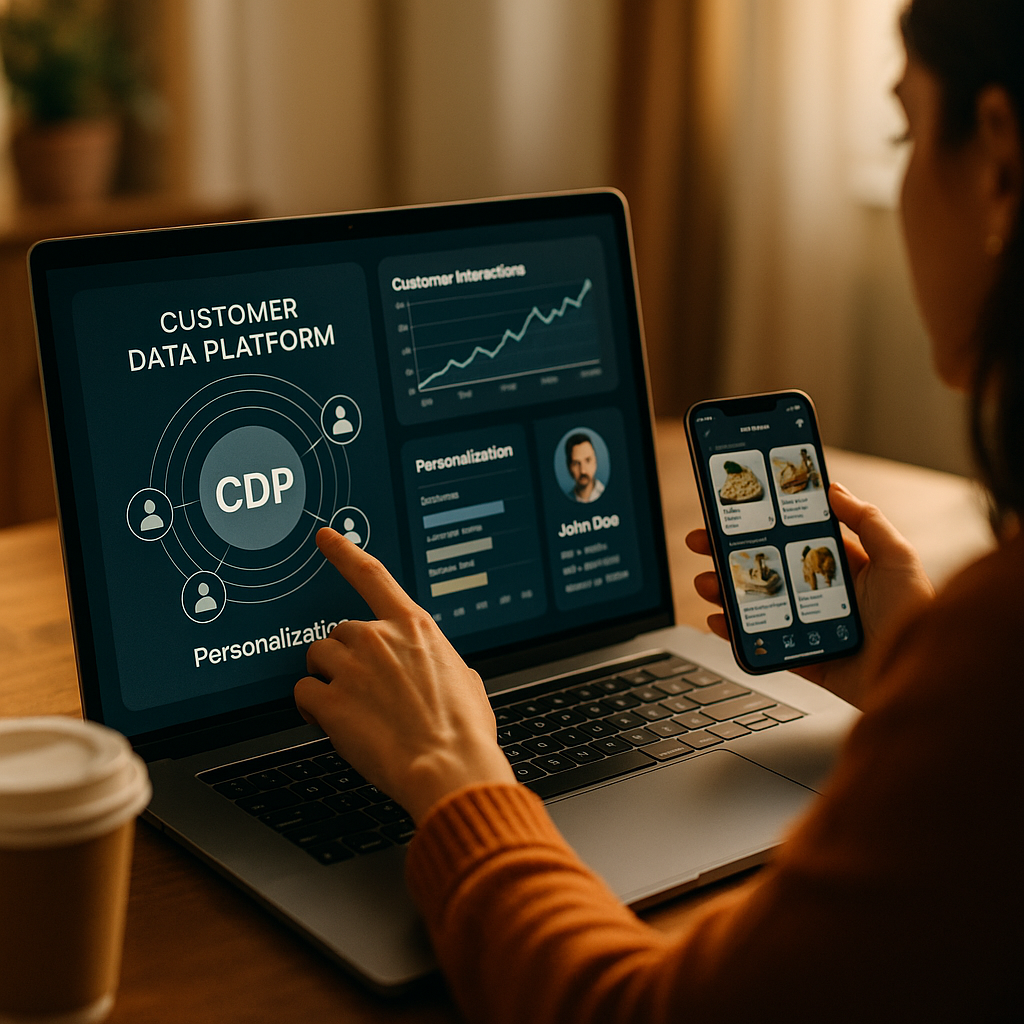Customer Data Platforms (CDPs) are transforming how businesses understand and interact with customers in 2025. By unifying and activating fragmented data, CDPs enable true personalization at scale. How exactly do these platforms work, and what’s their real impact? Explore how CDPs lay the foundation for next-level marketing effectiveness and seamless customer experiences.
The Evolution of Customer Data Management: A Look at CDP Technology
Businesses have long struggled with unifying scattered customer data across channels. Traditional databases and CRM systems only capture partial snapshots, leaving marketing efforts disjointed and impersonal. That’s where CDP technology has changed the game. Today’s leading platforms ingest data from email, web, mobile, social, and offline sources, creating a persistent, centralized customer profile.
According to a 2025 survey by CDP Institute, over 65% of enterprise brands have adopted CDPs, citing improved campaign performance and a dramatic reduction in data silos. Unlike data warehouses, which primarily store raw data, modern CDPs organize, cleanse, and systematize information specifically for marketing activation and personalization.
Unified Customer Profiles: The Heartbeat of Personalization
At the core of every CDP is the unified customer profile—a comprehensive, up-to-date record of every interaction and attribute tied to an individual. This single source of truth empowers brands to:
- Recognize customers across devices and sessions, stitching together anonymous and known behaviors.
- Enrich profiles with demographic, transactional, and behavioral data from all sources.
- Comply with privacy regulations by providing centralized preference and consent management.
- Activate personalized experiences in real time, adapting messaging to user context and intent.
By breaking down silos and reflecting the full customer journey, unified profiles drive higher engagement and foster brand loyalty.
How CDPs Power Real-Time Personalization Strategies
The modern consumer expects hyper-relevant, timely interactions. CDPs deliver by enabling real-time personalization across channels like web, email, mobile, and social. How does this work in practice?
- Segmentation: Marketers leverage dynamic segments based on recent behavior, purchase intent, or life stage, adjusting campaigns instantly as new data arrives.
- Journey Orchestration: CDPs trigger multi-step, cross-channel journeys, ensuring each touchpoint reflects current preferences and history.
- AI & Machine Learning: Advanced CDPs incorporate predictive analytics to recommend products or content, prevent churn, or trigger relevant offers before users disengage.
Studies by Gartner in 2025 show that brands using CDP-driven personalization outperform peers by at least 20% in campaign ROI, thanks to more relevant offers and higher conversion rates.
Privacy, Compliance, and Building Consumer Trust with CDPs
With greater access to data comes increased responsibility. Modern CDPs play a crucial role in helping organizations navigate evolving data privacy regulations like GDPR and CCPA. Through centralized consent management, anonymization tools, and granular data access controls, CDPs minimize compliance risks while respecting consumer preferences.
More importantly, transparency and control foster trust. A recent PwC survey in 2025 found that 72% of consumers are more likely to engage with brands that offer clear data policies and personalized communication based on permissions. CDPs empower ethical data use, turning compliance into a competitive differentiator.
CDP Implementation: Challenges and Best Practices for Marketers
Successfully deploying a CDP requires both strategic vision and technical know-how. Common challenges include integrating legacy systems, aligning internal teams, and ensuring high-quality data ingestion. Marketing leaders should follow these best practices:
- Define clear objectives: Prioritize use cases (personalization, attribution, audience insights) before investing in technology.
- Secure cross-functional buy-in: Involve IT, marketing, data privacy, and customer service stakeholders.
- Invest in data cleanliness: Clean, deduplicate, and standardize data before migration to ensure reliability.
- Choose scalable, open platforms: Opt for CDPs that offer robust integrations, flexible architectures, and AI capabilities.
- Measure success rigorously: Set KPIs for engagement uplift, conversion rates, and operational efficiency—then optimize iteratively.
Organizations that approach CDP implementation methodically report faster time-to-value, stronger personalization, and a deeper understanding of their customer base.
Future Trends: The Evolving Role of CDPs in Marketing Personalization
As artificial intelligence advances, CDPs are moving from data aggregation platforms to essential orchestration engines. In 2025, expect to see:
- Deeper integration with AI: Automated content recommendations, next-best-action insights, and anomaly detection will become standard features.
- More granular personalization: New data sources, from IoT devices to augmented reality interactions, will enrich profiles and enable even more tailored experiences.
- Composable architectures: Marketers will assemble best-in-breed CDP components—identity resolution, analytics, activation—into custom stacks for greater agility.
- Consumer-facing portals: Customers will gain more direct access to their data and preferences, reinforcing transparency and engagement.
The role of CDPs will shift from behind-the-scenes enablers to the cornerstone of adaptive, customer-centric marketing organizations.
Conclusion
Customer Data Platforms are now indispensable for brands aiming to deliver seamless, compliant, and deeply personalized experiences. By centralizing customer insights and powering real-time activation, CDPs drive measurable marketing success in 2025 and beyond. Businesses that invest in CDP technology and strategy today will lead the race for customer loyalty tomorrow.
Frequently Asked Questions about Customer Data Platforms and Personalization
-
What is a Customer Data Platform (CDP)?
A CDP is a centralized software system that collects, unifies, and activates customer data from multiple sources, creating persistent, comprehensive profiles for personalized marketing and analytics.
-
How does a CDP differ from a CRM?
While a CRM manages known customer records (mainly for sales and support), a CDP integrates anonymous and known data across all touchpoints for holistic, real-time personalization and analytics.
-
Can a small business benefit from a CDP?
Yes. Many modern CDPs offer scalable packages for small businesses, enabling them to unify data, improve targeting, and boost customer engagement affordably.
-
Does a CDP help with data privacy compliance?
Absolutely. CDPs provide centralized consent management, preference handling, and data access governance, ensuring compliance with regulations like GDPR and CCPA.
-
How quickly can businesses see results from a CDP?
Results vary, but many organizations report improved campaign performance, customer retention, and operational efficiency within a few months of CDP implementation.
